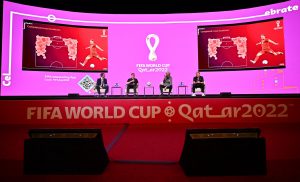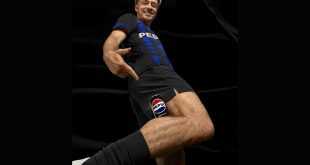 The FIFA Technical Study Group (TSG) held its third press conference of the 2022 FIFA World Cup – Qatar in Doha on Sunday, December 4. In providing a comprehensive analysis of the group phase, they offered up their learnings from the competition’s first 48 matches.
The FIFA Technical Study Group (TSG) held its third press conference of the 2022 FIFA World Cup – Qatar in Doha on Sunday, December 4. In providing a comprehensive analysis of the group phase, they offered up their learnings from the competition’s first 48 matches.
Joining FIFA Chief of Global Football Development Arsene Wenger at the press conference was ex-Germany striker and former Nationalmannschaft and USA head coach Jurgen Klinsmann, and Chris Loxston, FIFA Group Leader Football Performance Analysis and Insights.
The former French coach began by expressing his overall satisfaction at the general quality of the tournament, achieved despite the relatively short preparation time that teams have had. “I was very keen to see how a World Cup would go without any preparation time, how the teams [would] adapt [to] having no time to prepare, because we know a World Cup is won and decided by how quickly the teams learn,” he said. “In a competition, that can make a difference, and how quickly the coaches find their best balanced XI, their most efficient XI, and that is a very interesting observation for us.
“And I had some other questions: how well will it be organised? What will the experience of the fans be? Will it be possible to watch more than one game per day? And, I must say, this experience has been unique. I have seen the feedback we have from the fans is exceptional, and the TV audiences have never been higher. That means this World Cup has created a huge interest.”
Drawing on their vast experience and the thousands of items of data gathered at each match, the TSG members picked out several trends. We take a closer look at their four key observations from Qatar 2022 so far.
The importance of taking chances
No team had more shots in the group phase than Germany’s 67, which did not prevent them from going out of the competition. In contrast, Netherlands and Poland both won through to the last 16 despite figuring among the sides with the fewest shots. The reason for this was their effectiveness in front of goal. The Dutch have so far scored a goal every 1.6 shots on target and Poland every two, figures that compare favourably to the four Germany took on average to score each of their goals and the 11 needed by Belgium, who are also out.
Arsene Wenger said, “The teams who have the lowest number of shots on goal have qualified. We have two kinds: the high number of shots [on] goal shows the teams who dominate their game, and the low number of shots [on goal] shows a team that plays from a defensive point of view and played more on the counter-attack. That means there’s more efficiency for them. Approximately, you need two shots on goal. If you need too many shots on goal to be efficient, it doesn’t make you a World Cup winner.”
Jurgen Klinsmann said, “Unfortunately for us, one thing was we weren’t clinical enough in the finishing of the chances, those attempts that we created. The other discussion is about the number nine role, the finisher role. Because when you play with the “false” No. 9s, they always have the excuse they are not real No. 9s, so they’re not always expected to score the goals. We struggle right now in Germany to have a No. 9 that we had before. The last known one was obviously Miroslav Klose. So, the one thing is we’re not finishing things precisely enough, and the other thing is they’re lacking a real goalscorer to [translate] those attempts at goal into real goals.”
 Arunava about Football A look at football & the world through my eyes!
Arunava about Football A look at football & the world through my eyes!



